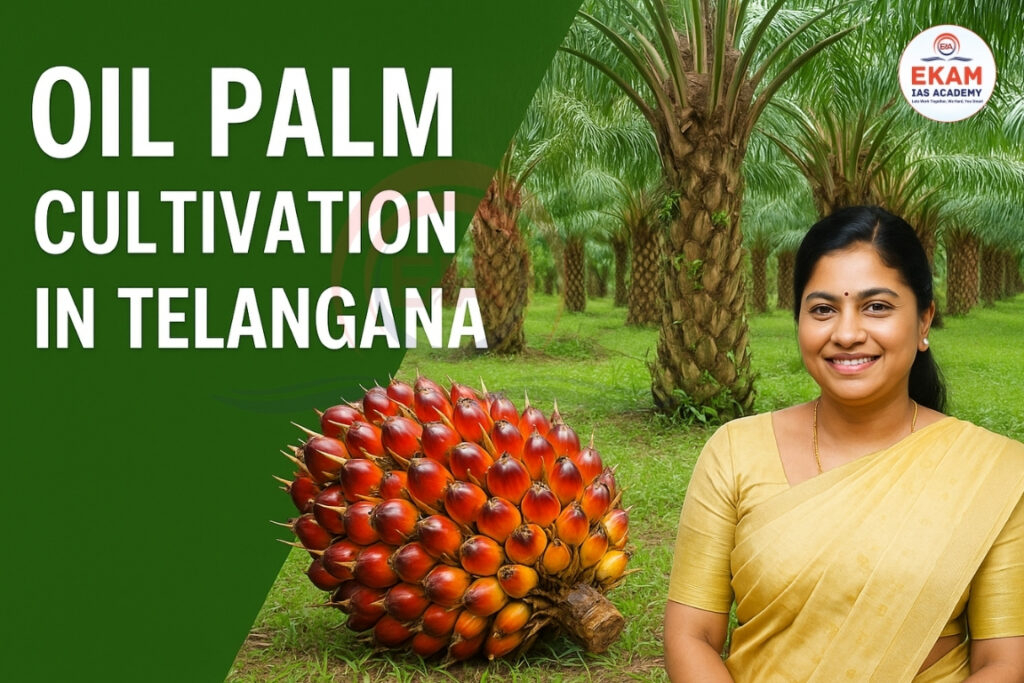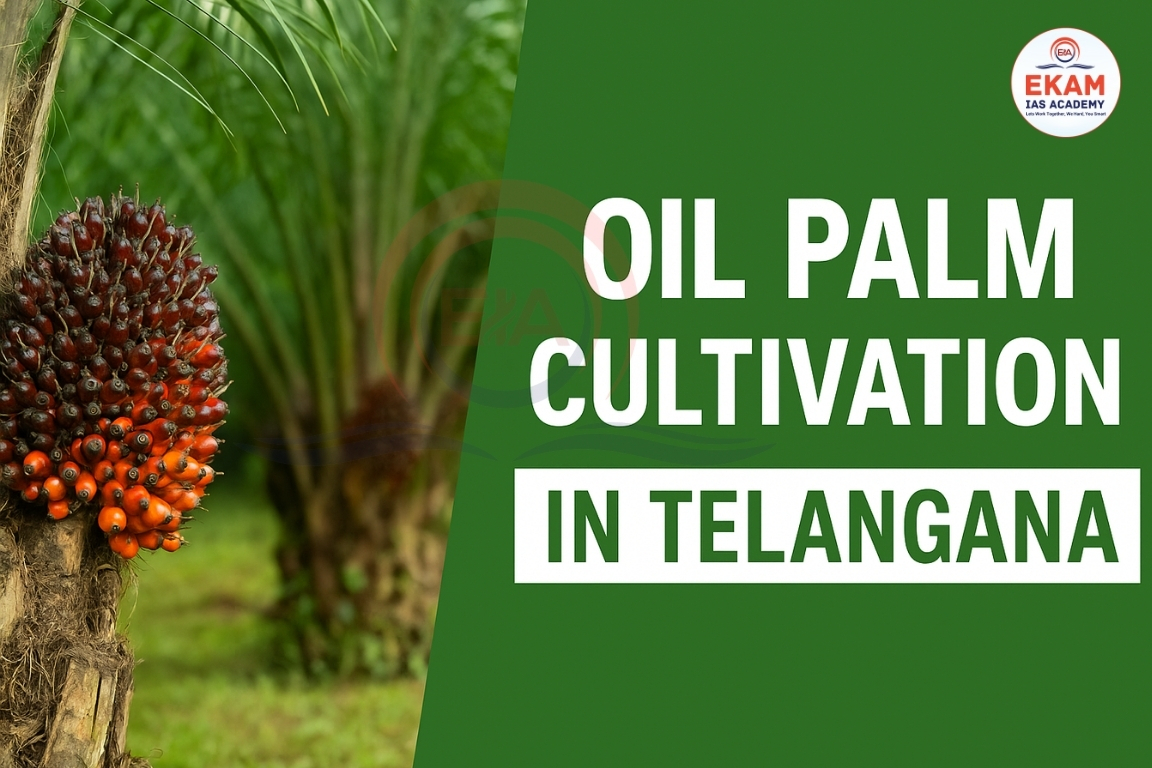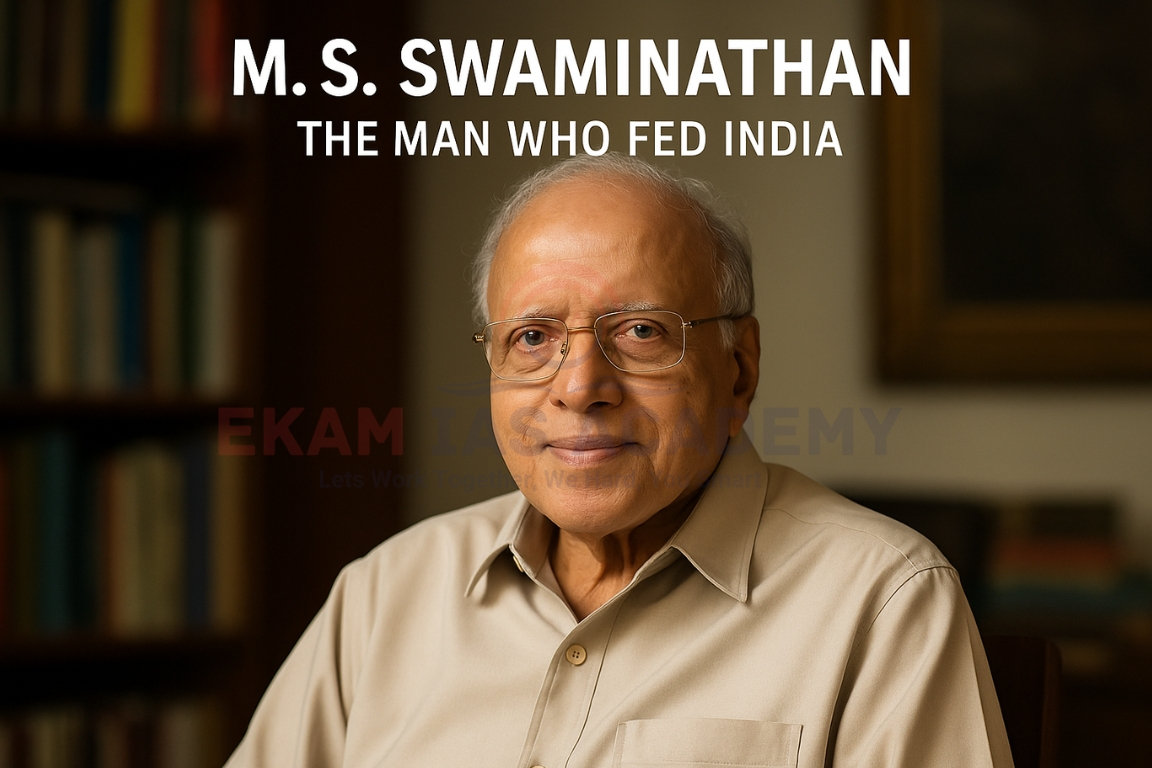Telangana is rapidly expanding oil palm cultivation under the Telangana State Oil Palm Mission. While the crop offers high income and government support, there are rising concerns about water use, environmental impact, and market instability.
Oil Palm Cultivation in Telangana:
- The first oil palm sapling was planted by then Andhra Pradesh CM N.T. Rama Rao in 1986.
- Initially popular in the Godavari delta, the crop spread to Telangana post-bifurcation.
- Early adoption by farmers in Khammam and Bhadradri Kothagudem districts showed encouraging returns.
Why Farmers Are Shifting to Oil Palm:
- Higher Income: Oil palm yields ₹60,000–₹1.5 lakh/acre annually, far higher than traditional crops like paddy.
- Government Support: Subsidies of up to ₹50,918/acre over four years. Guaranteed buyback through government-approved agencies.
- Resilient Crop: Withstands unseasonal rain, hailstorms, and is not affected by monkeys.
Expansion Efforts by the Government:
- Under National Mission on Edible Oils–Oil Palm (NMEO-OP), Telangana aims to increase area from 2.45 lakh acres to 20 lakh acres.
- 246 mandals identified as suitable for oil palm.
- 14 private firms involved, including Hindustan Unilever setting up processing plants.
- Farmers taken on exposure visits to Malaysia and local model farms for training.

Economic and Social Impact:
- Over 1.97 lakh acres brought under cultivation from 2021–2024.
- Tribal and small farmers benefiting through steady income.
- Nalgonda, Suryapet seeing new interest from retired officials, NRIs, and big landowners.
Major Challenges:
- Water Scarcity: Requires 150–250 litres of water per tree per day. Heavy dependence on borewells may strain groundwater in dry regions.
- Labour Shortage: Harvesting requires skilled workers; daily wages go up to ₹1,200 per worker.
- Market Risks: Import duty cuts on crude palm oil may reduce domestic prices. Farmers demand a fixed price of ₹25,000/tonne to ensure profitability.
- Environmental Concerns: Risks to soil health and biodiversity. Monoculture may reduce cropping diversity.
INDIA’S EDIBLE OIL CRISIS
High Import Dependency
- India imports 55–60% of its edible oil needs—over 16 million tonnes annually.
- This costs the country nearly $16 billion in foreign exchange.
Domestic Production Falling Short
- The growth rate of oilseed production is around 1.9% CAGR, which is too slow to meet growing demand.
- Domestic edible oil production covers less than half of the total consumption.
Low Inventories and Import Spikes
- Early 2025 saw edible oil imports at a four-year low, causing stock levels to drop sharply.
- In May 2025, palm oil imports increased by 84%, while overall vegetable oil imports rose by 33% to replenish stocks.
Impact on Inflation
- Retail inflation in edible oils touched 15.6% in January 2025, contributing significantly to food inflation.
- Prices of certain oils like coconut oil increased by nearly 40% in the past year.
Government Measures
- The government is promoting crop diversification from cereals to oilseeds.
- Schemes like National Mission on Edible Oils–Oilseeds (NMEO-OS) and Oil Palm (NMEO-OP) aim to boost domestic production.
- In June 2025, customs duty on crude edible oils was reduced from 20% to 10% to control prices.
Conclusion
Oil palm promises a better livelihood for farmers but comes with ecological and market risks. Sustainable practices, fair pricing, and strong infrastructure are essential to make it a long-term success.




